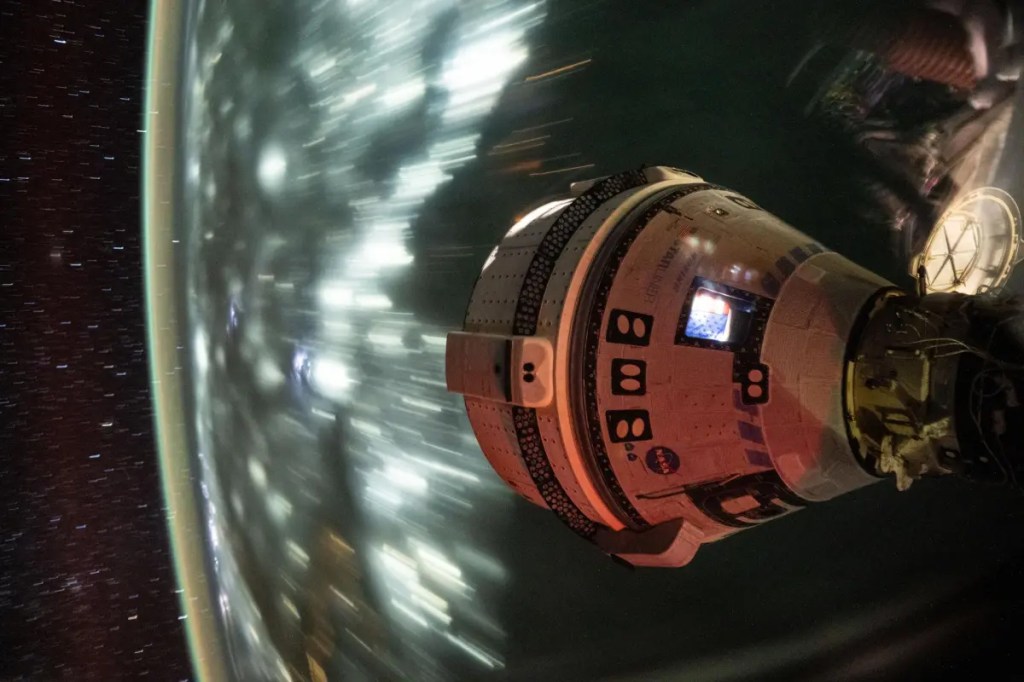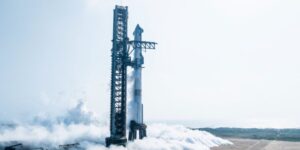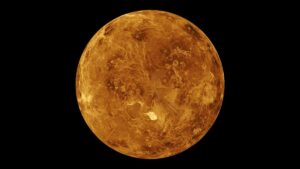As Boeing’s Starliner nears two months in space, teams conducted a hot-fire test of thruster performance and a helium leak from the spacecraft over the weekend to help decide when the spacecraft will come home and whether its two astronaut passengers from NASA will come with it.
Boeing announced in a press release that the test of the Starliner’s Reaction Control System (RCS) thrusters took place Saturday afternoon while docked with the International Space Station. Teams with NASA and Boeing also monitored the helium system for the Crew Flight Test mission.
“Both teams were very pleased with the results,” NASA’s Starliner Flight Director Chloe Mehring said in the press release.
The spacecraft arrived at the ISS on June 6, one day after launching from the Cape Canaveral Space Force Station atop a United Launch Alliance Atlas V rocket with NASA astronauts Butch Wilmore and Sonny Williams aboard. Called the Crew Flight Test mission, the astronauts are among the first crewed flight of the spacecraft as part of Boeing’s effort to certify it for use alongside SpaceX’s Crew Dragon spacecraft to ferry astronauts to and from the ISS as part of the Commercial Crew Program of NASA.
The original plans were for the Starliner to board the ISS in just about eight days before the scheduled return flight home, which would take Wilmore and Williams to land in one of several desert locations in the southwestern United States.
But during their trip to the station, the Starliner had five of its RCS thrusters fail, while also identifying several helium leaks in the spacecraft’s propulsion system, which is housed in the attached service module, hardware that will be jettisoned before re-entry. .
However, the Starliner safely docked and the valves were closed to stop any further escape of helium. The teams were also able to bring all but one of the thrusters back online, albeit at reduced power.
Boeing and NASA at the time decided to shelve any plans for a return trip while they worked through ground tests to simulate the stresses on the thrusters the spacecraft endured during the trip and figure out why some of them failed, while delving into the helium leak problem. Last week, the probable causes for both were revealed during a press conference, and the path to a decision to return home was laid out.
That includes this weekend’s hot fire test.
The teams successively fired 27 of the spacecraft’s RCS thrusters for one pulse each to confirm their power. The aft-facing thrusters were deployed in 1.2 seconds, while the others were deployed in 0.40 seconds, according to Boeing.
“The integrated teams between Starliner and the ISS worked extremely well together this week to finalize and safely execute the docked hotfire sequence,” Mering said.
Boeing said the thrusters operated “at peak thrust values ranging from 97-102 percent,” according to the release.
The company said the helium system also remains stable and noted that the RCS oxidizer isolation valve, which was not properly installed fully, is now operating normally after being opened and closed several times.
“The last few weeks have been really helpful in understanding the helium and thruster anomalies and how to address these issues for future flights,” Boeing vice president of commercial crew Mark Nappi said during a news conference last week. “That was the real goal here, is to be able to handle future flights and gain the confidence we needed.”
Boeing has a contract to provide six trips to the ISS, but NASA revealed on Friday that the first mission, Starliner-1, will not take place until August 2025 at the earliest, giving Boeing time to introduce corrective fixes to the service module , based on the findings of this mission.
The hot-fire test follows one conducted in the weeks since its arrival on the ISS, and paves the way for NASA to conduct a flight test readiness review likely later this week.
The results of the review will determine when the Starliner will be undocked from the station and whether Williams and Wilmore will be on board when it flies home.
Boeing said launch dates are available in August, but NASA will have to decide whether to bring that spacecraft home or send the Crew-8 astronauts, who have been on board since March in their Crew Dragon spacecraft, to to make room for Crew-9 replacements flying their own Crew Dragon.
The Crew-9 flight is currently scheduled to lift off no earlier than August 18. NASA would prefer to do a handoff so that both Crew-8 and Crew-9 are on board at the same time, something that would require the Starliner to free up the parking space, since there are only two ports aboard the ISS that they can to be berthed Dragon or Starliner.
NASA’s commercial team program manager Steve Stich said last week that returning Williams and Wilmore to the Starliner remains the preferred choice, but that alternatives are on the table.
“I think we’re starting to get closer to the final pieces of the flight justification to make sure we can get home safely, and that’s our main focus right now,” Stich said. “We have contingency options. We put them into play. NASA always has contingency options. We know little of what they are and haven’t done much work on them. But we kind of know what they are. But right now we’re really focused on getting Butch and Sunny home on the Starliner.”
Originally Posted:



